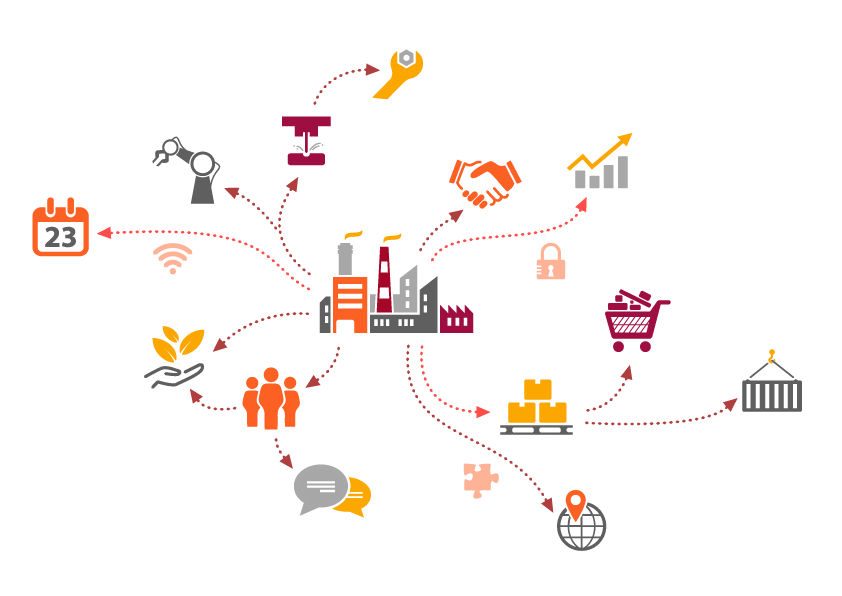In today’s dynamic business environment, effective procurement and supply chain management play a critical role in driving organizational success. Procurement and supply chain professionals are entrusted with the responsibility of optimizing costs, ensuring reliable supply, and mitigating risks while maintaining high standards of quality and sustainability. To excel in this field, professionals need to possess a diverse skill set and comprehensive knowledge of key areas within procurement and supply chain management.
We will explore in the article the essential learning and knowledge areas that are fundamental to the success of procurement and supply chain professionals. From developing robust procurement strategies and managing supplier relationships to implementing effective contract and risk management practices, these areas cover the breadth and depth of expertise required in today’s complex business landscape. By acquiring proficiency in these areas, professionals can contribute to cost savings, operational efficiency, and overall business growth.
- Procurement Strategy: Developing and implementing a comprehensive procurement strategy that aligns with the organization’s goals and objectives, considering factors such as cost, quality, and sustainability.
- Supplier Relationship Management: Building and maintaining strong relationships with suppliers through effective communication, collaboration, and trust-building activities. This ensures a reliable supply of goods and services and promotes long-term partnerships.
- Contract Management: Skillfully managing the entire contract lifecycle, including drafting contracts, negotiating terms and conditions, monitoring compliance, and resolving disputes. Effective contract management helps optimize supplier performance and minimize risks.
- Negotiation: Mastering negotiation techniques to secure favorable terms and conditions with suppliers, such as competitive pricing, quality assurances, and service-level agreements. Strong negotiation skills contribute to cost savings and other benefits for the organization.
- Cost Management: Employing strategies to effectively manage costs throughout the procurement process, including identifying cost-saving opportunities, optimizing supplier relationships, and controlling expenses. This involves analyzing spend data, implementing cost reduction initiatives, and monitoring cost performance.
- Risk Management: Proactively identifying and mitigating risks associated with procurement and supply chain activities. This includes assessing and managing risks related to supplier reliability, quality, compliance, market volatility, and geopolitical factors to ensure continuity and minimize disruptions.
- Supply Chain Management: Overseeing the end-to-end flow of goods and services from suppliers to customers, encompassing activities such as demand planning, sourcing, production, inventory management, logistics, and order fulfillment. Strong supply chain management ensures efficient operations and customer satisfaction.
- Logistics Management: Effectively managing the movement and storage of goods and materials throughout the supply chain, including transportation, warehousing, distribution, and order fulfillment. Optimizing logistics processes contributes to cost savings and timely delivery.
- Inventory Management: Implementing strategies to optimize inventory levels, ensuring an adequate supply while minimizing excess inventory and associated costs. This involves analyzing demand patterns, implementing just-in-time practices, and employing inventory optimization techniques.
- Demand Planning: Utilizing historical data, market trends, and other relevant factors to forecast demand for goods and services accurately. Effective demand planning enables organizations to align supply with demand, reduce stockouts, and optimize inventory levels.
- Forecasting: Utilizing statistical techniques, data analysis, and market insights to predict future demand for goods and services. Accurate forecasting helps organizations make informed decisions regarding procurement, production, and resource allocation.
- Sourcing: Identifying and selecting suppliers based on criteria such as cost, quality, reliability, and sustainability. Effective sourcing strategies encompass supplier evaluation, supplier diversity initiatives, and global sourcing considerations.
- Purchasing: Executing the procurement process, including issuing purchase orders, managing supplier relationships, and ensuring timely delivery of goods and services. Efficient purchasing practices involve supplier performance evaluation, invoice management, and procurement automation.
- Supplier Performance Management: Monitoring and evaluating supplier performance based on key performance indicators (KPIs) to ensure adherence to quality standards, on-time delivery, and overall satisfaction. Supplier scorecards and performance improvement initiatives help optimize supplier relationships.
- Supplier Development: Collaborating with suppliers to enhance their capabilities, address performance gaps, and foster continuous improvement. Supplier development initiatives can include training programs, knowledge sharing, and joint process improvement projects.
- Supplier Quality Management: Ensuring that suppliers meet quality standards and requirements through rigorous quality control processes, audits, inspections, and certifications. Maintaining high supplier quality contributes to product and service excellence.
- Supplier Compliance: Ensuring that suppliers comply with legal, regulatory, and ethical requirements, such as labor laws, environmental regulations, and anti-corruption policies. Supplier compliance programs mitigate risks associated with non-compliance.
- Supplier Sustainability: Promoting sustainable and responsible practices within the supply chain, including environmental sustainability, social responsibility, and ethical sourcing. Supplier sustainability initiatives encompass assessing suppliers’ sustainability performance, supporting green initiatives, and fostering transparency.
- Ethical Sourcing: Ensuring that goods and services are sourced ethically, considering factors such as fair labor practices, human rights, and responsible sourcing of raw materials. Ethical sourcing initiatives promote responsible business practices and support social and environmental well-being.
- Global Sourcing: Navigating the complexities of sourcing goods and services from suppliers located in different countries, including managing international trade regulations, cultural differences, logistics, and geopolitical risks. Global sourcing offers opportunities for cost savings and diversification.
- E-Procurement: Leveraging technology and digital platforms to automate and streamline procurement processes, such as e-sourcing, e-auctions, e-catalogs, and electronic purchase orders. E-procurement improves efficiency, reduces cycle times, and enhances visibility.
- Spend Analysis: Analyzing spending patterns, supplier performance, and market trends to identify cost-saving opportunities, negotiate better terms, and improve procurement processes. Spend analysis helps optimize procurement decisions and drives cost reductions.
- Category Management: Managing procurement activities by category, grouping similar goods and services together to achieve economies of scale, standardize processes, and maximize supplier value. Category management involves strategic sourcing, supplier consolidation, and performance tracking.
- Supplier Collaboration: Collaborating with suppliers to enhance supply chain performance, drive innovation, and achieve mutual benefits. Supplier collaboration initiatives involve joint planning, information sharing, and continuous improvement projects.
- Continuous Improvement: Embracing a culture of continuous improvement by implementing tools and methodologies such as Lean Six Sigma, Kaizen, and process mapping. Continuous improvement initiatives drive efficiency, eliminate waste, and enhance overall procurement and supply chain performance.
